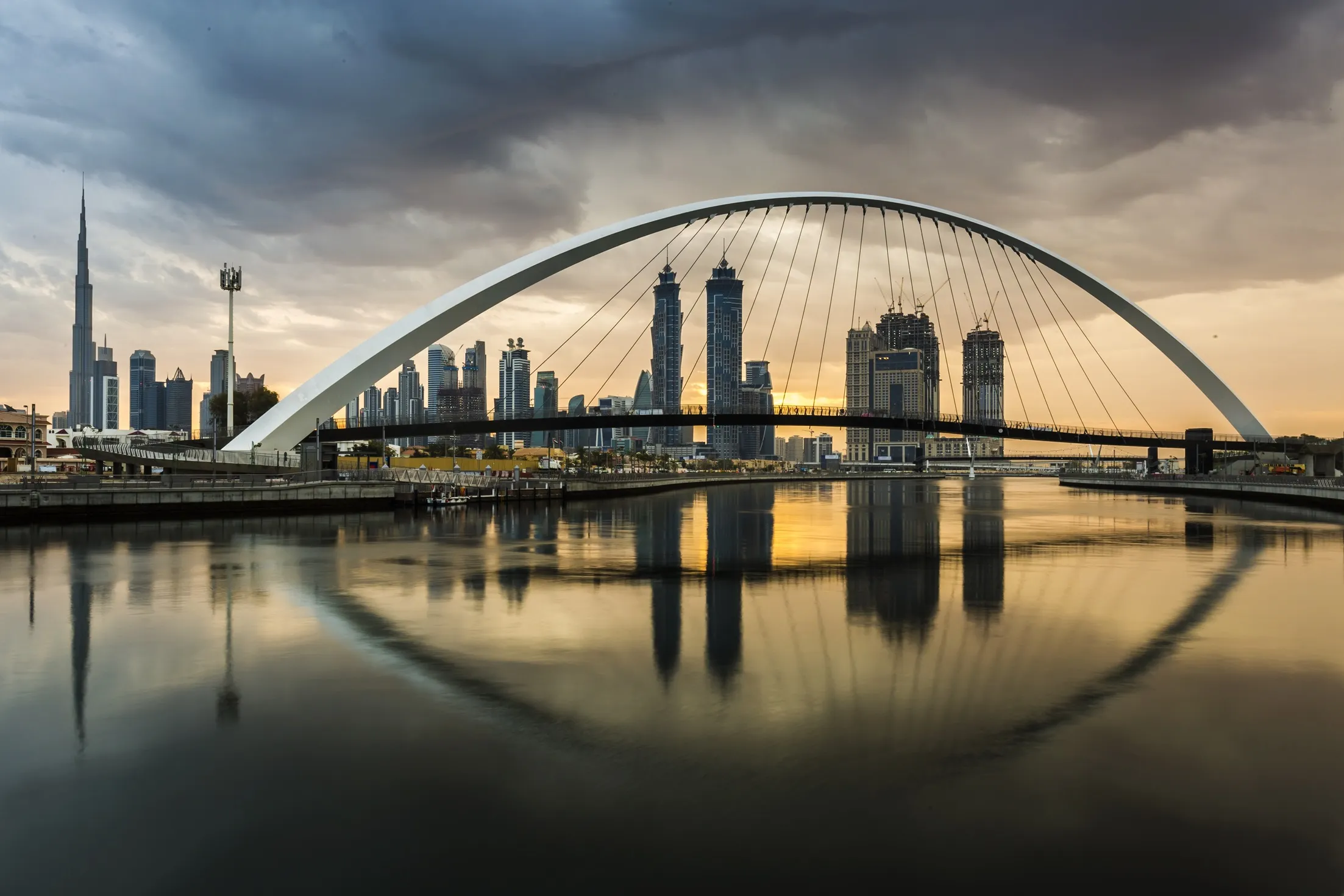A successful consortium led by the UK’s Transport research Laboratory (TRL) has been selected by Innovate UK to deliver the GATEway project (Greenwich Automated Transport Environment), one of three projects awarded to test driverless vehicles in UK urban locations.
The US$12.5 million project will see three trials of different types of zero emission automated vehicles within an innovative, technology-agnostic testing environment set in the Royal Borough of Greenwich.
The ‘prime meridian’ was establi
December 4, 2014
Read time: 5 mins
A successful consortium led by the UK’s Transport research Laboratory (491 TRL) has been selected by Innovate UK to deliver the GATEway project (Greenwich Automated Transport Environment), one of three projects awarded to test driverless vehicles in UK urban locations.
The US$12.5 million project will see three trials of different types of zero emission automated vehicles within an innovative, technology-agnostic testing environment set in the Royal Borough of Greenwich.
The ‘prime meridian’ was established at Greenwich in 1851 and as such became the global reference point for time and navigation. It is therefore fitting that the GATEway project will see Greenwich start on the path to becoming an international hub for the testing of vehicles capable of navigating autonomously.
Greenwich is an ideal location for the GATEway project. It has a rapidly growing population and is pursuing a cutting-edge smart city agenda, investigating the use of technology to address the needs of its residents. The GATEway project fits perfectly within this programme. The Greenwich peninsula is home to the O2 arena and has road, underground, bus, taxi, river bus and cable car transport links. The GATEway project will therefore allow thorough investigation of how automated vehicles can add to a busy multimodal transport system.
In each of the three trials to be undertaken within the project, safety will be effectively managed through the careful choice of test environments, vehicle systems and testing protocols and by working closely with the relevant authorities.
The purpose of the project is multifaceted and will demonstrate automated transport systems to public, industry and media stakeholders in the three planned trials. These will include various public tests of fully automated passenger shuttle transport systems and autonomous valet parking for adapted cars. Objective and subjective feedback on their use will be captured to build a detailed understanding of the extent to which these systems are used, trusted and accepted. This will inform how such systems can integrate into and complement existing multimodal transport infrastructure and provide essential insights into the human factors issues that may be critical for the successful deployment of automated transport systems.
TRL’s full mission driving simulator, DigiCar, will be used in parallel to investigate driver behaviour with automated vehicles, using a photorealistic 3D model of the Greenwich peninsula. Risk, liability and insurance issues will be specifically addressed whilst pedestrian models of interaction with automated vehicles will be developed alongside exploration of adaptation to traffic lights to enable safe and effective automated vehicle operation.
TRL is the lead partner of the GATEway project with the Royal Borough of Greenwich as the testing location and smart city partner. Royal Sun Alliance, Shell and Telefonica are also involved, each with specific interests in how vehicle automation may influence their business models. In addition to experts from TRL, research capability is provided by the Royal College of Art, which is leading stakeholder engagement activities for the project whilst the University of Greenwich and500 Imperial College London will provide internationally recognised domain specialists in relation to pedestrian modelling and cyber-security respectively.
The automated vehicle technology to be tested will be provided by Phoenix Wings, a company established in Greenwich that has been involved in worldwide demonstrations of automated transport. Crowd-sourcing experts, Commonplace, will use digital and social media tools to map public responses to the trial whilst additional vehicle adaptation and robotics expertise will be provided by GOBOTiX.
The project is to be supported by a diverse, high calibre advisory group, members of which will review project documentation and provide astute insights to ensure the project meets its objectives and delivers best value for Innovate UK. The advisory group is to be chaired by Lord Borwick of Hawkshead, who has led discussion of vehicle automation in the House of Lords, whilst members of group include representatives from948 General Motors, ATOS 7644 Worldline, the 1459 AA, 6454 Avis, the 503 Highways Agency and the 4961 RAC Foundation.
Dr Nick Reed, principal of Human Factors and Vehicle Automation at TRL and technical lead of the GATEway project said: “At TRL, we are delighted to have been able to bring together this superb consortium in response to the Innovate UK Driverless Car competition and excited to get started on delivery of this genuinely innovative project as one of the winning bidders. We have the perfect location in which to demonstrate automated transport systems and our vision is to bring international recognition to Greenwich, London and the UK through this project, establishing the UK as the global centre of excellence for the testing and development of automated vehicles.”
TRL chief executive, Rob Wallis commented: “TRL has been innovating in the testing and development of automated vehicles for more than fifty years. The GATEway project will allow us to demonstrate new, innovative automated transport systems to drive safe, clean, efficient and flexible urban mobility.”
Councillor Denise Hyland, leader of the Royal Borough of Greenwich said: “This is a fantastic coup for the Royal Borough of Greenwich and demonstrates its growing reputation as one of the UK’s leading locations for smart city innovation.”
The US$12.5 million project will see three trials of different types of zero emission automated vehicles within an innovative, technology-agnostic testing environment set in the Royal Borough of Greenwich.
The ‘prime meridian’ was established at Greenwich in 1851 and as such became the global reference point for time and navigation. It is therefore fitting that the GATEway project will see Greenwich start on the path to becoming an international hub for the testing of vehicles capable of navigating autonomously.
Greenwich is an ideal location for the GATEway project. It has a rapidly growing population and is pursuing a cutting-edge smart city agenda, investigating the use of technology to address the needs of its residents. The GATEway project fits perfectly within this programme. The Greenwich peninsula is home to the O2 arena and has road, underground, bus, taxi, river bus and cable car transport links. The GATEway project will therefore allow thorough investigation of how automated vehicles can add to a busy multimodal transport system.
In each of the three trials to be undertaken within the project, safety will be effectively managed through the careful choice of test environments, vehicle systems and testing protocols and by working closely with the relevant authorities.
The purpose of the project is multifaceted and will demonstrate automated transport systems to public, industry and media stakeholders in the three planned trials. These will include various public tests of fully automated passenger shuttle transport systems and autonomous valet parking for adapted cars. Objective and subjective feedback on their use will be captured to build a detailed understanding of the extent to which these systems are used, trusted and accepted. This will inform how such systems can integrate into and complement existing multimodal transport infrastructure and provide essential insights into the human factors issues that may be critical for the successful deployment of automated transport systems.
TRL’s full mission driving simulator, DigiCar, will be used in parallel to investigate driver behaviour with automated vehicles, using a photorealistic 3D model of the Greenwich peninsula. Risk, liability and insurance issues will be specifically addressed whilst pedestrian models of interaction with automated vehicles will be developed alongside exploration of adaptation to traffic lights to enable safe and effective automated vehicle operation.
TRL is the lead partner of the GATEway project with the Royal Borough of Greenwich as the testing location and smart city partner. Royal Sun Alliance, Shell and Telefonica are also involved, each with specific interests in how vehicle automation may influence their business models. In addition to experts from TRL, research capability is provided by the Royal College of Art, which is leading stakeholder engagement activities for the project whilst the University of Greenwich and
The automated vehicle technology to be tested will be provided by Phoenix Wings, a company established in Greenwich that has been involved in worldwide demonstrations of automated transport. Crowd-sourcing experts, Commonplace, will use digital and social media tools to map public responses to the trial whilst additional vehicle adaptation and robotics expertise will be provided by GOBOTiX.
The project is to be supported by a diverse, high calibre advisory group, members of which will review project documentation and provide astute insights to ensure the project meets its objectives and delivers best value for Innovate UK. The advisory group is to be chaired by Lord Borwick of Hawkshead, who has led discussion of vehicle automation in the House of Lords, whilst members of group include representatives from
Dr Nick Reed, principal of Human Factors and Vehicle Automation at TRL and technical lead of the GATEway project said: “At TRL, we are delighted to have been able to bring together this superb consortium in response to the Innovate UK Driverless Car competition and excited to get started on delivery of this genuinely innovative project as one of the winning bidders. We have the perfect location in which to demonstrate automated transport systems and our vision is to bring international recognition to Greenwich, London and the UK through this project, establishing the UK as the global centre of excellence for the testing and development of automated vehicles.”
TRL chief executive, Rob Wallis commented: “TRL has been innovating in the testing and development of automated vehicles for more than fifty years. The GATEway project will allow us to demonstrate new, innovative automated transport systems to drive safe, clean, efficient and flexible urban mobility.”
Councillor Denise Hyland, leader of the Royal Borough of Greenwich said: “This is a fantastic coup for the Royal Borough of Greenwich and demonstrates its growing reputation as one of the UK’s leading locations for smart city innovation.”









